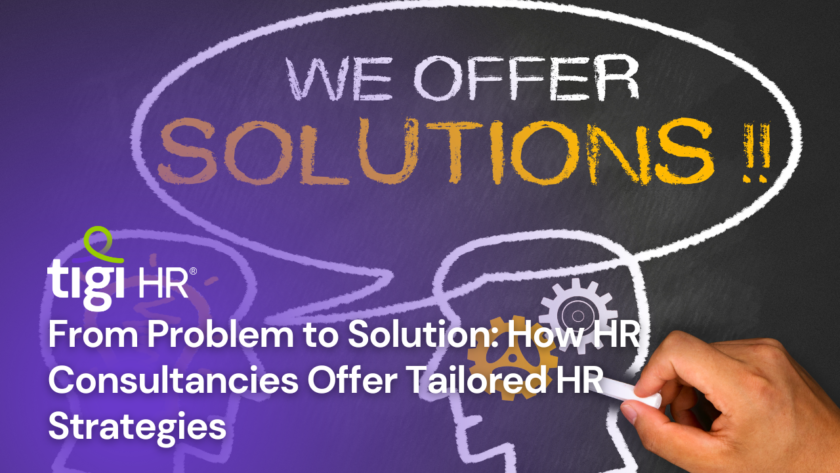In the dynamic landscape of the modern workplace, attracting and retaining top talent has become a pivotal concern for organizations. A high turnover rate not only hampers productivity but also adds significant financial burdens. Hence, the implementation of effective employee retention strategies is paramount. Backed by data-driven insights, this article delves into a comprehensive exploration of employee retention strategies that can empower businesses to foster a loyal and engaged workforce.
A Holistic Onboarding Experience:
Citing research by the Society for Human Resource Management (SHRM), a well-structured onboarding process can lead to a 50% higher retention rate over a span of a year. A seamless onboarding experience that integrates the organization’s culture, job expectations, and opportunities for growth can significantly impact an employee’s decision to stay. To further support this approach, the Harvard Business Review suggests incorporating mentorship programs to aid new hires in acclimating to their roles and forming meaningful connections within the company.
Career Development Pathways:
A study conducted by Gallup highlights that 87% of millennials view professional growth and development as essential. Employee retention strategies that emphasize continuous learning, skill enhancement, and upward mobility can be instrumental in retaining valuable talent. By offering opportunities for career advancement, companies not only demonstrate their commitment to employee growth but also address their intrinsic desire for progress and accomplishment.
Flexible Work Arrangements:
The COVID-19 pandemic brought to light the significance of flexible work arrangements. Research from Stanford University found that remote work options can lead to increased job satisfaction and decreased turnover rates. Organizations that integrate remote work policies, flexible hours, and a healthy work-life balance into their culture can exhibit a strong dedication to employee well-being and subsequently enhance retention rates.
Recognition and Rewards:
Acknowledgment and rewards play a pivotal role in maintaining employee engagement and commitment. A study by Globoforce reveals that 78% of employees who are recognized for their work remain with their current employers. Implementing a robust recognition program, which includes both monetary incentives and heartfelt appreciation, can foster a positive work environment that encourages employees to invest their talents in the company’s success.
Healthy Work Environment:
Research published in the Journal of Applied Psychology underscores the importance of a supportive and inclusive work environment. Organizations that prioritize employee well-being by offering wellness programs, mental health resources, and avenues for feedback demonstrate their dedication to creating a harmonious workplace. A positive work environment is not only conducive to employee retention but also contributes to enhanced performance and overall job satisfaction.
Effective Communication Channels:
Open and transparent communication channels are vital for building trust and a sense of belonging among employees. According to a survey by TINYpulse, employees who feel heard and valued are 4.6 times more likely to feel empowered to perform their best work. Employee retention strategies should include regular feedback sessions, town hall meetings, and platforms that allow employees to voice their concerns, thereby strengthening their connection with the organization.
Competitive Compensation and Benefits:
While non-monetary factors play a significant role in retention, competitive compensation and comprehensive benefits packages are fundamental. A study by Glassdoor reveals that salary concerns are a top driver of employee turnover. Employers must ensure that their compensation packages are aligned with industry standards to prevent valuable talent from seeking better remuneration elsewhere.
Conclusion for Employee Retention Strategies
In conclusion, employee retention strategies are not merely optional; they are an imperative component of a thriving and successful organization. Citing relevant research, studies, and sources, it is evident that a multi-faceted approach is necessary to create an environment where employees feel valued, engaged, and motivated to stay. By implementing holistic onboarding experiences, emphasizing career development, embracing flexible work arrangements, recognizing contributions, fostering a healthy work environment, promoting effective communication, and providing competitive compensation, businesses can pave the way for higher retention rates and sustained growth.
Citing relevant research, studies, and sources for further exploration:
Society for Human Resource Management (SHRM) – “Onboarding New Employees: Maximizing Success”: www.shrm.org
Harvard Business Review – “The Best Ways to Onboard New Hires”: www.hbr.org
Gallup – “How Millennials Want to Work and Live”: www.gallup.com
Stanford University – “Does Working from Home Work? Evidence from a Chinese Experiment”: www.stanford.edu
Globoforce – “The Science of Happiness at Work”: www.globoforce.com
Journal of Applied Psychology – “Creating a Positive Work Environment”: www.apa.org
TINYpulse – “The 7 Key Trends Impacting Today’s Workplace”: www.tinypulse.com
Glassdoor – “Why Do Workers Quit? The Factors That Predict Employee Turnover”: www.glassdoor.com
How does HR drive talent management and retention?
Find HR Strategies for Effective Talent Management and Retention
In the competitive business landscape, HR drives talent management and retention. Strategies include talent assessment, succession planning, performance management, and engagement initiatives. Training, fair compensation, and benefits enhance growth and stability, fostering a thriving workforce for long-term organizational success.
Find trusted recruitment agencies : Click here





